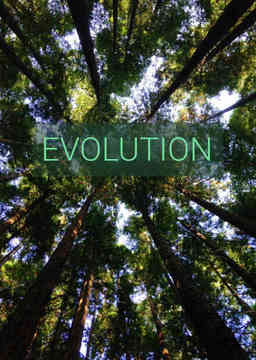



Difficulty:
 Intermediate
Intermediate
United Kingdom
The more you think about it, the more complex time travel seems! This video explains a key paradox that is one of the main reasons for this.
Difficulty:
 Intermediate
Intermediate
USA
John Searle's thought experiment, called "The Chinese Room," presents an argument against the idea that computers could ever be truly intelligent.
Difficulty:
 Intermediate
Intermediate
United Kingdom
How can one brother travel into space and return younger than his twin? In just sixty seconds, a startling side effect of Einstein’s Theory of Relativity is explained to us.
Difficulty:
 Intermediate
Intermediate
United Kingdom
Douglas Adams was a writer and author best known for The Hitchhiker’s Guide to the Galaxy. Sadly, he died of a massive heart attack in 2001 at the young age of 49. Each year, fans of his work celebrate the 25th of May (or “Towel Day”) as a tribute to the author.
Difficulty:
 Intermediate
Intermediate
United Kingdom
The BBC looks at a new and innovative renewable energy invention, Kite Power Solutions. It is estimated that 30 kites could provide electricity for 75,000 homes.
Difficulty:
 Intermediate
Intermediate
United Kingdom
Learn about the states of matter, solids, liquids and gases, how they're different and where they're found in everyday life.
Difficulty:
 Intermediate
Intermediate
USA
With help from Fuse School, learn the basics about global warming, particularly how burning fossil fuels adds extra carbon dioxide to the atmosphere, and how this then leads to climate change.
Difficulty:
 Intermediate
Intermediate
United Kingdom
Fuse School: To better understand the science behind global warming, it is important to first understand how the Earth's atmosphere functions. This informative video shows the role of gravity and how the electromagnetic spectrum is involved.
Difficulty:
 Intermediate
Intermediate
United Kingdom
This dazzling short film references the Rosetta mission of the European Space Agency, which intends unlock the mysteries of the comets and, in doing so, the origins of our Solar System.
Difficulty:
 Intermediate
Intermediate
USA
Rosetta revisits the exciting scientific discoveries she has made during her time at Comet 67P/Churyumov-Gerasimenko, including the successful search to find Philae. Now it's time to start preparing to descend to the comet for the end of her extraordinary mission.
Difficulty:
 Intermediate
Intermediate
USA
The earth's bodies of water are the focus of this film about evolution. As the narrator points out, the vast depths of the earth's oceans remain barely explored.
Difficulty:
 Intermediate
Intermediate
USA
Corals are sessile animals, meaning they are immobile and anchored to one spot for the entirety of their lives. Stony coral, leathery coral, and sea fan coral are featured in this segment, along with the beautiful fish that inhabit coral reefs.
Difficulty:
 Intermediate
Intermediate
USA
Brilliantly colorful parrot fish and two-bar sea bream are among the fish featured in this segment. Sea cucumbers, the vacuum cleaners of all the Earth's oceans, also make an appearance.
Difficulty:
 Intermediate
Intermediate
USA
This segment looks at the advantages and disadvantages of swarm fish and loner fish, providing insight into their coloration and behavior. Spectacular footage reveals twobar sea bream, trumpet fish, barracudas, and harlequin sweetlips.
Difficulty:
 Intermediate
Intermediate
USA
Green sea turtles (the largest hard-shelled sea turtle) and whale sharks (the largest shark and fish overall) are featured in this segment. We also encounter a langouste, otherwise known as a rock lobster, and a moray eel lurking in their coral reef habitat.
Difficulty:
 Intermediate
Intermediate
USA
We learn about the thousands of kilometers that humpback whales travel from their summer habitat in the polar regions to the tropical or subtropical waters where they spend the winter. Their multi-versed songs and the markings on their flukes are also discussed.
Difficulty:
 Intermediate
Intermediate
USA
Marine mammals are the focus of this segment on coastal sea life. Humpback whales mostly swim along the coasts, whether in the Northern or Southern Hemisphere. Seals are semi-aquatic and try to stay as close to the coast as possible, though they'll search for prey in depths of up to forty meters.
Difficulty:
 Intermediate
Intermediate
USA
California sea lion communication, mating habits, and past and present threats to their survival are discussed. This segment additionally features amazing aerial photography of their rocky coastal habitats.
Difficulty:
 Intermediate
Intermediate
USA
The video starts with information about coastal geology and the evolution of birds. It includes amazing footage of white storks, wildebeest, as well as zebras in East Africa's Serengeti region.
Difficulty:
 Intermediate
Intermediate
USA
The focus of this segment is on animals of the African savanna. We get to see giraffes and elephants, the largest of the land creatures, as well as cheetahs, the fastest.
Difficulty:
 Intermediate
Intermediate
USA
Rhinoceroses, or rhinos for short, are the largest land animals after elephants. Five species remain (two in Africa and three in Asia) and all are endangered as a consequence of the illicit trade of their horns. The importance of rivers is another focus of this segment.
Difficulty:
 Intermediate
Intermediate
USA
The series draws to a close with footage of apes, the most direct ancestors of humans. The narrator nicely sums up the meaning of evolution and man's place in nature.
Difficulty:
 Intermediate
Intermediate
USA
On stage at Cannes Lions, game designer and author Jane McGonigal showcased research demonstrating the power that gaming can have in the real world.
Difficulty:
 Intermediate
Intermediate
USA
The Ocean Cleanup is a Netherlands-based, non-government environmental engineering organization that develops technology to extract plastic pollution from the oceans. They have developed a "passive" cleanup system that takes advantage of the natural oceanic forces of wind, water, and currents.
Are you sure you want to delete this comment? You will not be able to recover it.